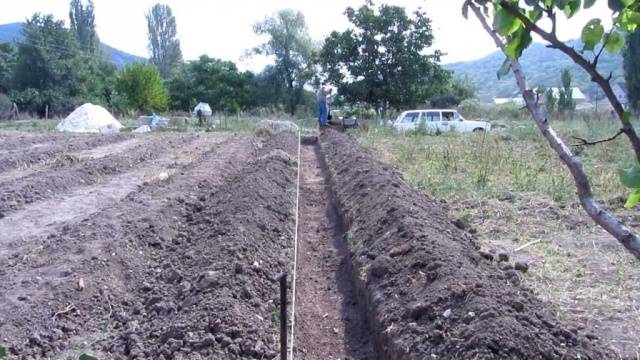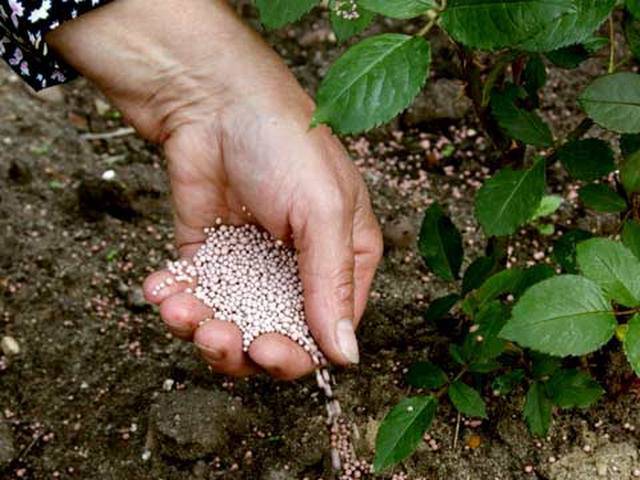Content
So far, the cultivation of raspberries with yellow berries is not so widespread, although there are varieties that can be called favorites. Among them Raspberry Yellow, which appeared in 1979. Its “parents” were the Ivanovskaya and Maroseyka varieties. But the variety was obtained not by ordinary crossing, but by cloning in the laboratory. Testing of the new raspberry with yellow berries lasted 12 years. Only after this, Professor V.V. Kichin and his staff suggested growing the variety to gardeners.
Until now, the attitude towards raspberry varieties with yellow fruits is gardeners ambiguous. We will try to dispel doubts and tell you how to grow and care for raspberry bushes.
Botanical properties of the variety
When creating new raspberry varieties, breeders focus on the needs of gardeners: ripening time, disease resistance, taste and ability to bear fruit for a long time.
Raspberry Yellow Giant, according to the description of the properties of the variety, fully meets the needs of gardeners. This is truly a dietary product, rich in vitamins.
Description of the variety:
Yellow Giant is a remontant variety: it bears fruit on shoots of the first and second year.The shoots of the second year are gray, and the shoots of the first year are dirty brown. The waxy coating on the stems is insignificant.
The bushes are powerful, erect, not spreading. The shoots are flexible, reliable, and grow up to 2 meters in height. Although there are few thorns, they are prickly.
The large leaves of the variety are rich green in color with clearly visible sharp teeth, wrinkled.
During flowering, raspberries are covered with a white veil, like a bride. This impression is due to the abundance of large white flowers on long peduncles.
Yellow fruits are attached to thick petioles. Each berry weighs up to 8 grams, although there are specimens as small as plums - up to 13 grams. Apparently, this played a role in choosing the name of the variety.
Yellow berries have a classic cone shape: rounded at the bottom, with a sharp tip at the top. The drupes are small, the adhesion between them is tight.
One side shoot can immediately ripen from 15 to 20 large berries that glow in the sun. At first the berries are greenish-yellow, but when ripe they are yellow-orange in color.
Characteristics
If we talk about the characteristics of this raspberry variety, it has many advantages:
- The variety is approved by the State Register for the North-West region.
- The large-fruited Yellow Giant fully lives up to its name.
- Flowering, judging by the description and reviews of gardeners, is long-lasting (starting from mid-July): from one to one and a half months. One bush produces up to 6 kilograms of large yellow berries.
- Refers to varieties with mid-early ripening.
- The taste properties are excellent. Children especially like sweet yellow berries with a slight sourness. The Yellow Giant variety was highly rated by tasters - 4.2 out of 5.
- Nutritionists recognize the usefulness of this variety of raspberries.People with allergies, diabetes, pregnant and lactating women, and young children should include yellow raspberries in their diet. Berries (description of composition) contain a large amount of sugar and less acids. This provides the sweet taste. There is more folic acid than in other raspberry varieties. The berry is useful for blood formation and immune support. The giant yellow fruits contain small amounts of anthocyanins (coloring substances).
- Raspberries of this variety are practically not affected by diseases and can resist many harmful insects.
- High winter hardiness (up to -30 degrees) allows you to grow a remontant variety in regions with harsh winters.
- Yellow raspberries have a dessert purpose and are suitable for preparing delicious compotes, jellies, syrups, and juices.
It is impossible, while giving a flattering description of yellow raspberries, to remain silent about some of the shortcomings. This would be unethical for gardeners.
Although against the backdrop of the advantages, the disadvantages do not look so bad:
- Yellow fruits with delicate pulp are difficult to transport over long distances.
- The mother bush is capable of producing a lot of shoots, so you need to constantly prune during the summer.
- The presence of sharp thorns makes picking the fruit difficult.
- Prolonged rains or prolonged drought negatively affect the quality of berries.
Landing rules
As gardeners note in numerous reviews, the yield of bushes depends on planting raspberry seedlings of the Yellow Giant variety.
Selecting a location
The description indicates that raspberry seedlings of the Yellow Giant variety need to be allocated a sunny area, protected from the wind. Despite the fact that raspberries love moisture, they should not be planted in places with close groundwater. The optimal direction for the rows of the Yellow Giant is from north to south.In this case, each raspberry shoot will receive the share of heat and light necessary for development. The site should not be located in a lowland or at a high elevation.
Not only is the soil there severely depleted, but pests can also be inherited.
Preparing the ground
The Yellow Giant raspberry variety feels best on sandy or loamy soil. You can check the suitability of the soil like this: after squeezing, the lump should fall apart, as in the photo. On sandy or heavy soil, caring for raspberries becomes very difficult. If the soil does not correspond to the preferences of the remontant Yellow Giant, then you will not get a big harvest. Gardeners often write about this in reviews.
When planting raspberries in the fall, before digging, you need to add at least 25 kg of manure, 60 grams of superphosphate per square. Soil containing a large amount of peat is diluted with sand, at least four buckets for each square meter. Acidic soils are not suitable for the Yellow Giant; they can be deoxidized with lime.
As for potash fertilizers, they are applied during spring soil preparation.
Dates and types of planting
Remontant raspberries of this variety can be planted both in autumn and spring. The main thing is not to be late with the deadlines when planting in spring.
The most optimal planting method is trench. The trenches are dug at a distance of at least 1.5 m from each other. The width of the trench itself for the remontant raspberry variety, due to its strong growth, is approximately 80 cm. The same distance must be maintained between the bushes.
Before planting, compost and wood ash are added to the trench. The planted raspberry bushes are sprinkled with soil and watered well.
A healthy seedling is the key to a harvest
When choosing remontant raspberry seedlings, you need to pay attention to many nuances:
- The color of the roots should be light, without signs of disease damage.
- If the seedling has an open root system, then the presence of white roots is mandatory. If the raspberry root system is closed, then the soil should be “stitched” with roots.
- The length of the shoots does not play a special role, because they will still have to be trimmed.
- The presence of growth buds at the root and 1-3 shoots is a prerequisite.
When planting, they are removed, but you can judge the fertility of the raspberries.
Features of care and cultivation
In fact, caring for remontant Yellow Giant raspberries is no more difficult than other varieties. Proper watering, fertilizing, weeding weed, loosening the soil - that’s probably all the processes. Although there are still some nuances.
Watering and fertilizing
Raspberries love water, but judging by the description and reviews, you should not flood the soil to the point of a swamp. Problems will begin with the root system. Pests and diseases multiply quickly on weakened plants.
In order for the remontant raspberry of the Yellow Giant variety to fully develop, it must be promptly fed with fertilizers containing manganese, potassium, boron, iron, phosphorus and nitrogen. Fertilizers must be applied during the growing season. As a rule, in the fall in dry form (the photo below shows how a gardener does this).For spring feeding of raspberries of this variety, fertilizer is dissolved in water.
The Yellow Giant responds well to wood ash. It is applied 2-3 times during the summer, sprinkled under the bushes before watering. As gardeners note in reviews, mulching with humus or compost not only nourishes the raspberry bushes, but also prevents weeds from running amok in the garden bed.
Trimming, garter
During the entire growing season, it is necessary to cut out excess rapidly growing shoots, this was mentioned in the description. If the shoots of these remontant raspberries are left unattended, they choke out flowering bushes, deplete the soil, and, as a result, a sharp decrease in yield.
If you grow remontant raspberries with yellow berries in a two-year cycle, then in the spring each shoot should be tied to a trellis. As for first-year students, you need to focus on their height.
After all, the raspberry yield is high, the plant bends under the weight of the berries.
Do I need shelter for the winter?
Judging by the descriptions and reviews, the Yellow Giant has excellent frost resistance. If you live in regions with a mild climate and abundant snow, then remontant raspberries do not need to be insulated, just sprinkle the root system with humus. In order for the plant to survive the harsh climate, it will have to be dug in.
Since harvesting is possible on one-year and two-year-old shoots, preparation for winter will be different:
- If raspberry shoots are left for next year, they are bent down, tied into bunches, covered with non-woven material and covered with sawdust or dry soil.
- When growing the Yellow Giant annually, all shoots are cut out and then covered in the same way.
Work is carried out before the onset of frost.
Pests
As already mentioned in the description of the remontant raspberry variety Yellow Giant, the plant is little affected by pests and diseases. But since different varieties grow in the garden, problems cannot be completely avoided.
Most often, raspberries are harmed by:
- raspberry beetles;
- raspberry fly;
- spider mite;
- raspberry moth (larvae).
Treatment against pests should be carried out not only during the period of mass destruction of plants, but also for prevention, before flowering. Most often, gardeners use:
- Karbofos;
- Confidor;
- Spark;
- Fufanon.
As gardeners write in reviews, pruning shoots at the root, loosening, and timely treatment with drugs will help prevent insect invasion and the appearance of diseases.
Benefits of yellow raspberries:















